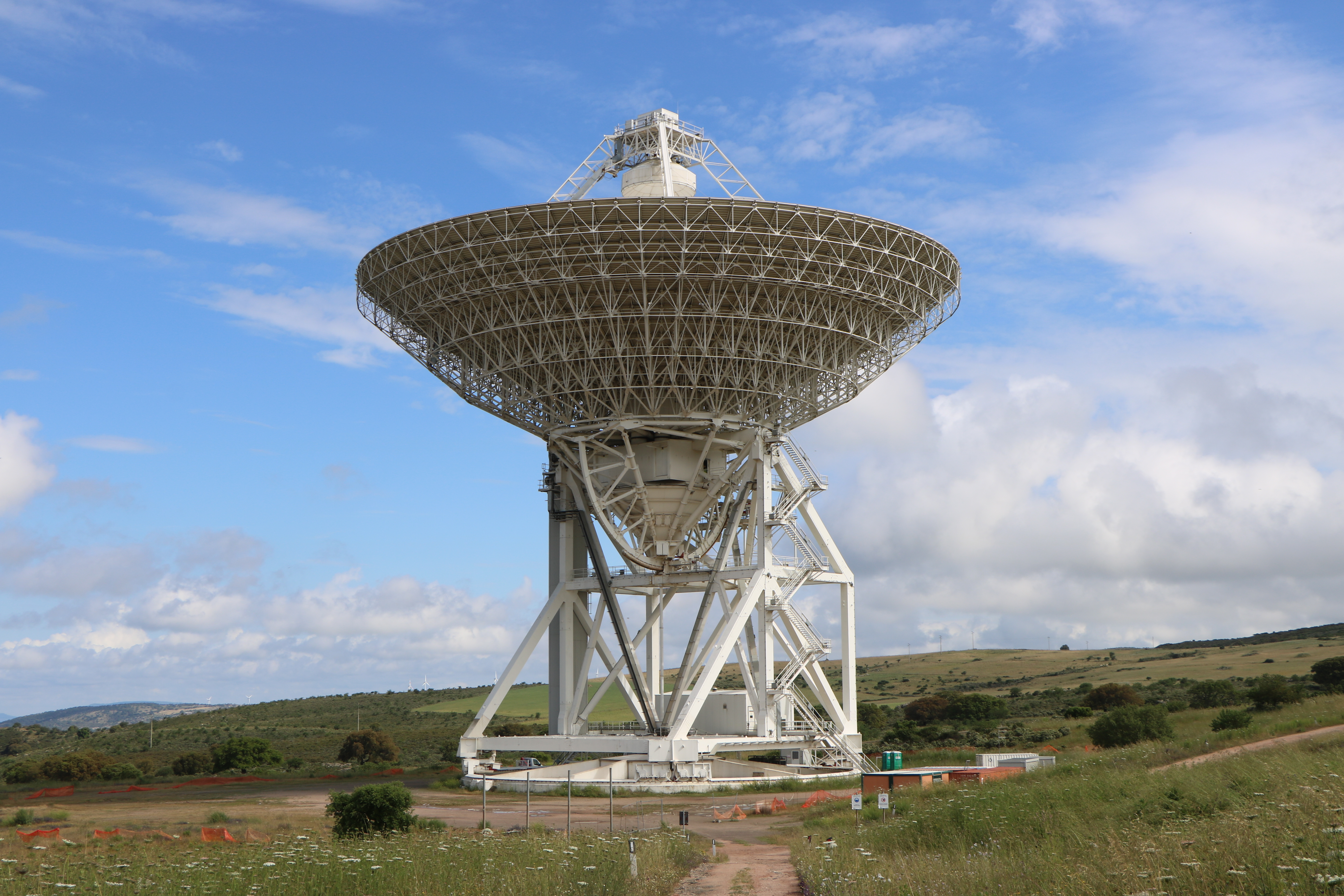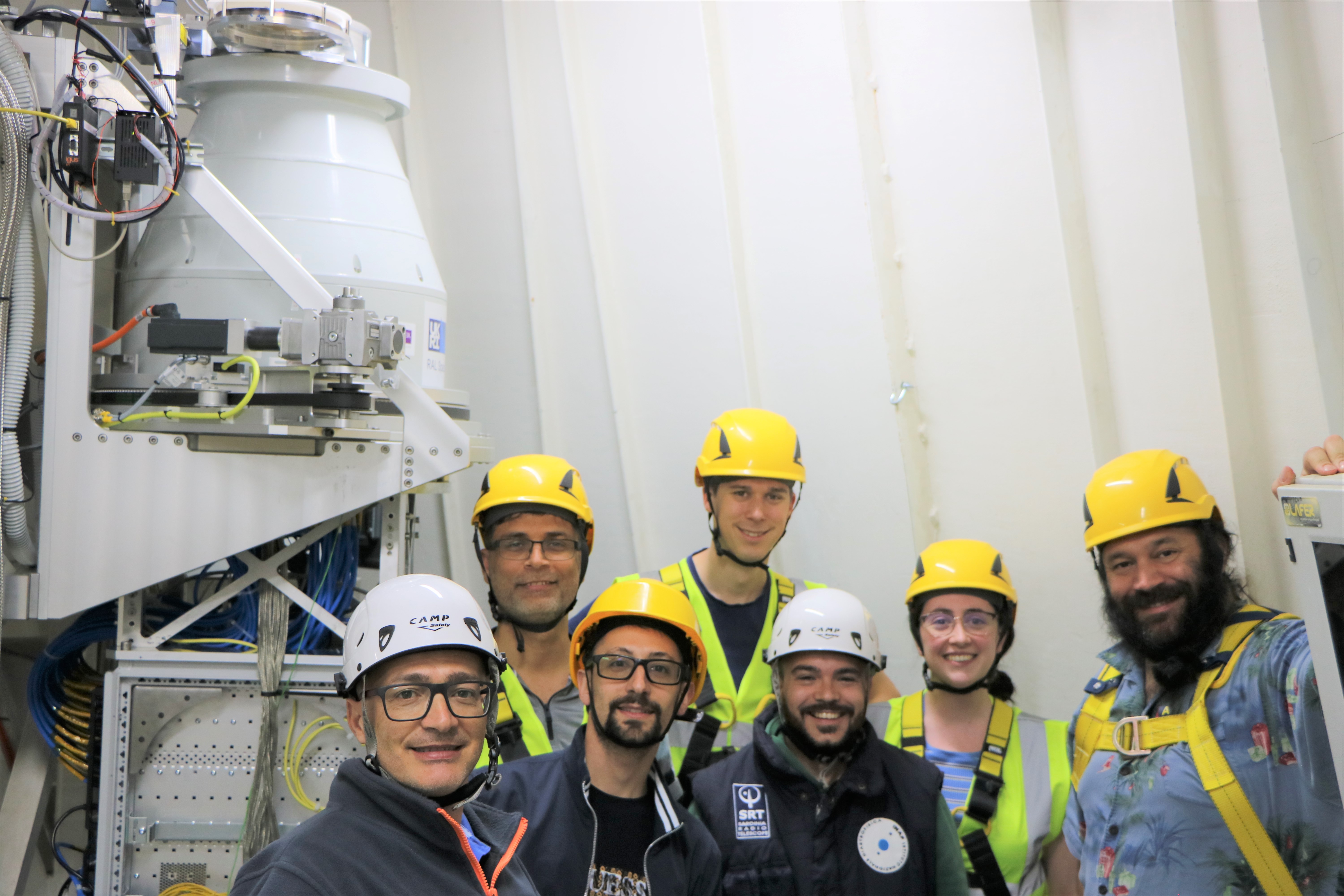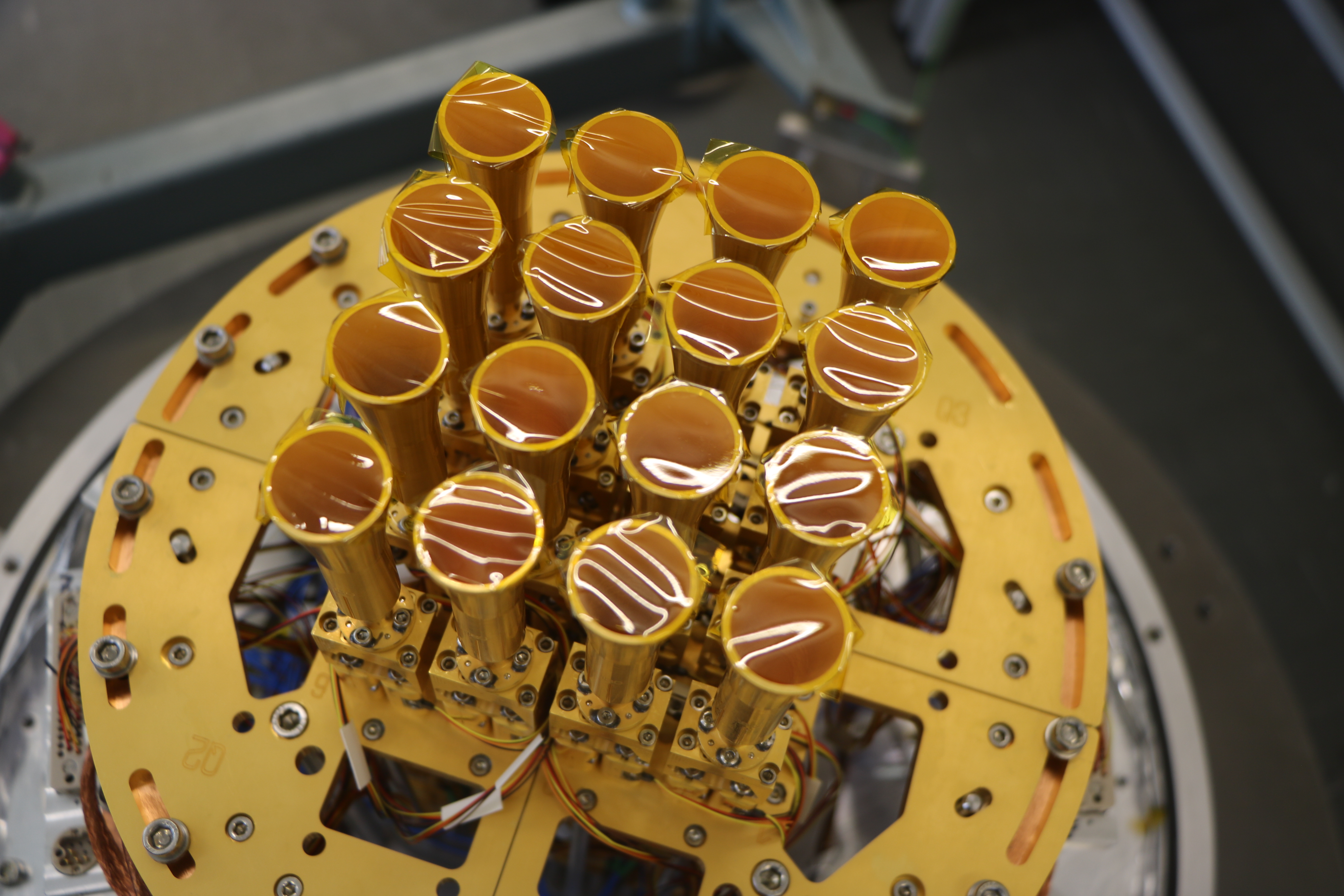The Cryogenic Array Receiver for Users of the Sardinia Observatory (CARUSO) has been developed by RAL Space's Millimetre Wave Technology (MMT) Group and partners from the University of Manchester and STFC's Technology Department. CARUSO will be the highest frequency instrument on the telescope, operating from 75 to 116 GHz.

The 64m diameter Sardinia Radio Telescope. Credit: STFC RAL Space
Exploring the Universe
The Sardinia Radio Telescope is a single-dish radio telescope approximately half the diameter of the London Eye located in the south Sardinian countryside.
Operated by the Italian National Institute of Astrophysics (INAF), the SRT has played an important role in astronomical discovery since its construction in 2012, including work which has furthered our understanding of black holes.
Its large dish is designed to collect radio waves with a variety of frequencies transmitted through space which are then picked up and analysed by advanced scientific instruments to infer information about celestial objects, such as galaxies, pulsars, black holes, and other phenomena that emit radio waves.

The teams from RAL Space and INAF next to the CARUSO instrument after its installation on the Sardinia Radio Telescope. Credit: STFC RAL Space
Detecting and analysing frequencies
One issue faced by the scientists and engineers who use and operate the Sardinia Radio Telescope is how to maximise the information contained within the radio signals it receives.
The RAL Space MMT Group are experts at addressing issues such as this through the design, development, and deployment of Millimetre Wave instruments such as CARUSO which will enable the telescope to pick up precise signals from space.
CARUSO uses heterodyne technology to convert and manipulate radio frequencies. This is a type of signal processing which works by combining two radio frequencies to generate a new, lower, frequency, which makes signal processing much more manageable.
The instrument is cryogenically cooled to a temperature only 20 Kelvin above absolute zero – around -250°C – in order to detect very weak radio signals from space. This feat was made possible thanks to a mechanically cooled cryostat designed and built by STFC's Technology Department.

Top view of the inside of CARUSO, showing the feedhorns of its 16-pixel array. Credit: STFC RAL Space
Astronomical aspirations
CARUSO will have two observing modes – radioastronomy weak source mode and solar observation mode.
Unusually, the instrument can look directly at the Sun without components being damaged. This will allow an extension of INAF's SunDish project and will have a valuable role in the prediction of space weather, preventing harm to satellites in space and power distribution networks on Earth. When CARUSO becomes operational, it will enable the first ground-based observations of our Sun at 100 GHz.
Graham Marshall, CARUSO Project Manager at RAL Space said:
"I'm really proud of this milestone for the entire CARUSO team. It's been a huge group effort between ourselves, the University of Manchester, STFC's Technology group and INAF to get this instrument designed, tested and installed onto the telescope, and we're all very excited to hear about the first astronomical observations made. It has been a pleasure working so collaboratively with INAF and I look forward to working on further projects in the future."
Professor Peter Huggard, Millimetre Wave Technology Group Leader at RAL Space, said:
“RAL Space and Technology Department colleagues, together with staff at the University of Manchester, have worked really hard together over several years to achieve this excellent milestone. As a state-of-the-art millimetre wave camera, the highest frequency instrument on the telescope, CARUSO will be used extensively by astronomers in coming years. The team can be justifiably proud of their major contribution to ground-based astronomy."
Wider upgrades at the SRT
CARUSO is one of four new receivers delivered to the Sardinia Radio Telescope as part of a project funded by the Italian Ministry of University and Research.
The President of the National Institute of Astrophysics Marco Tavani said:
“With the new cutting-edge instrumentation and infrastructural updates of the Sardinia Radio Telescope, we will be able to really go much further in the study of the Universe in radio waves. I am really proud to see all this complex and articulated work completed in perfect compliance with the timing and funding provided by the Ministry of University and Research, also considering the serious problems associated with the past COVID-19 pandemic. A choral work that has seen all the 'souls' of INAF - scientific, technical-engineering and administrative - collaborate in the best possible way to achieve this important milestone".
